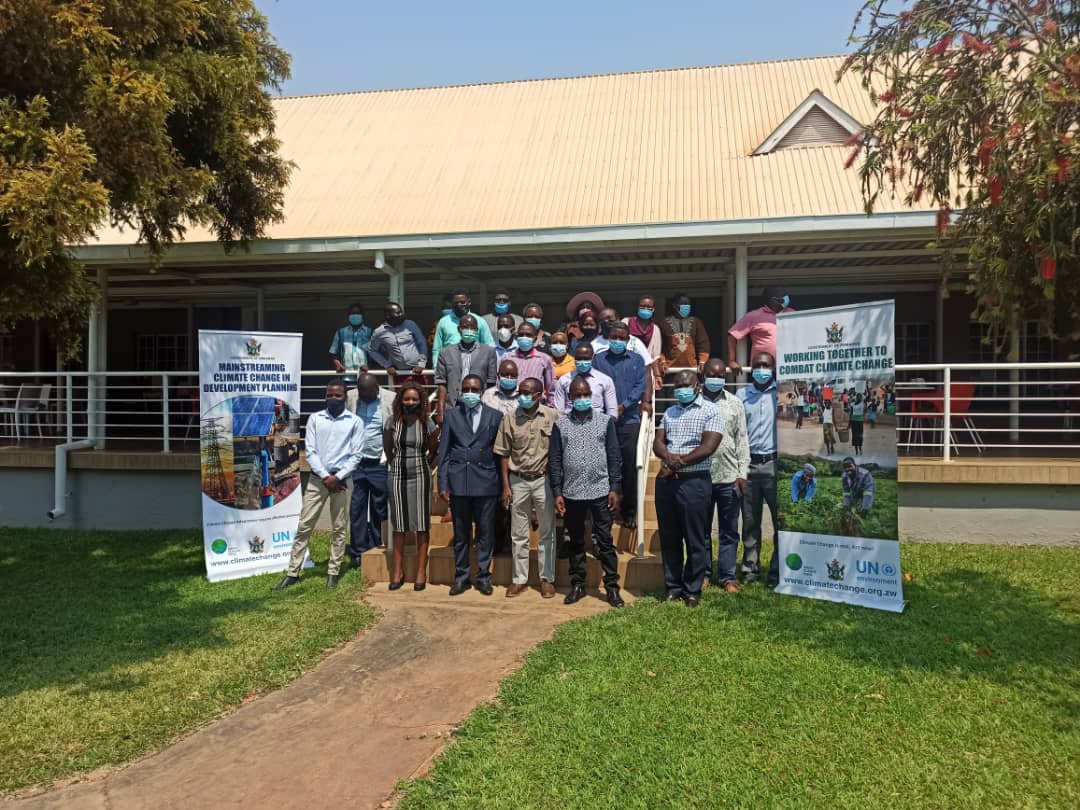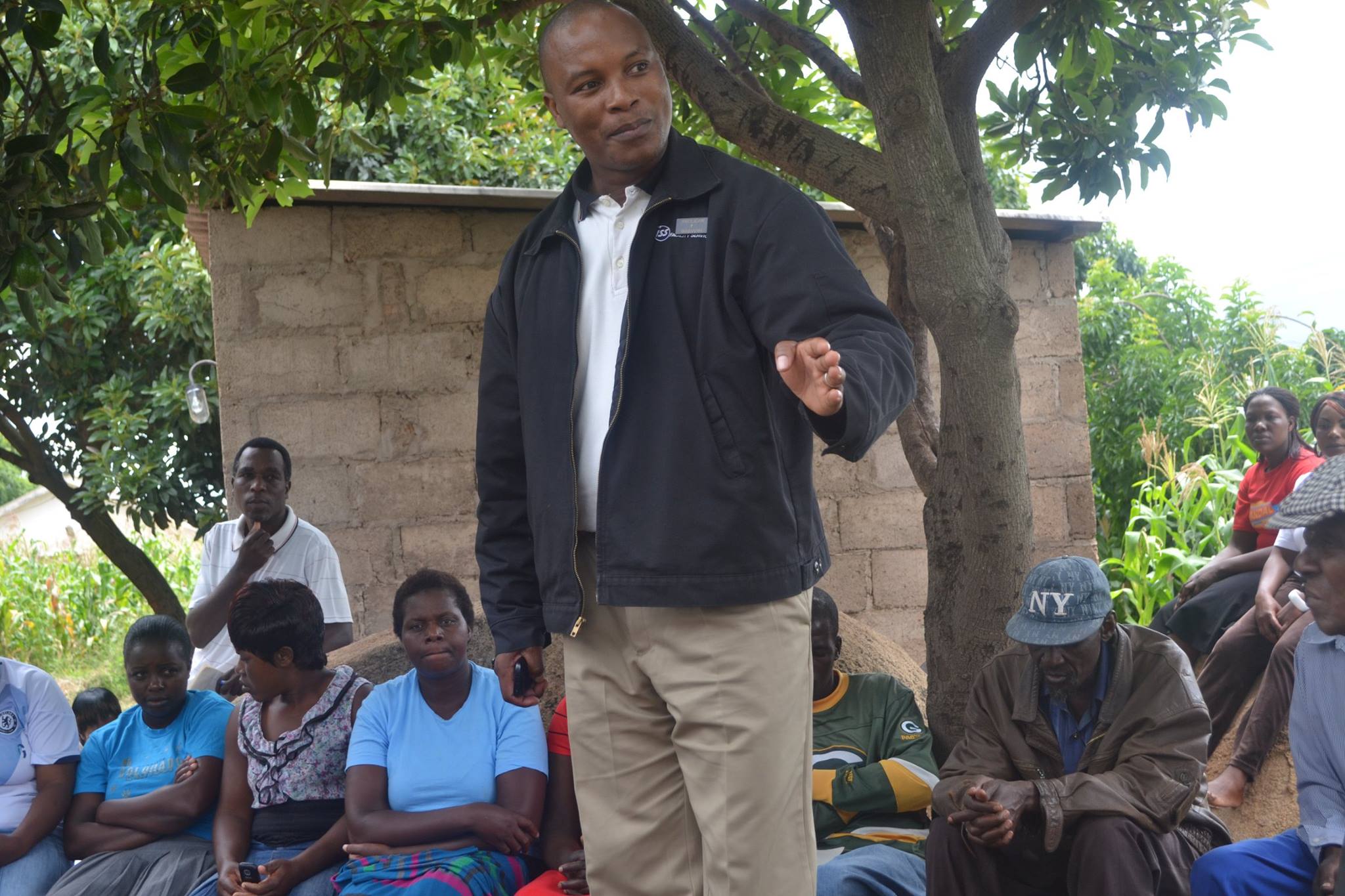|
Getting your Trinity Audio player ready...
|
By Tendai Guvamombe
The validation of the draft Vulnerability Assessment Report (VAR) held at Mazowe Hotel, in Mashonaland Central Province on the 28th September 2021 by various stakeholders is expected to drive the country towards risk reduction in vulnerability, sensitivity, and exposure as part of climate proofing the socio economic infrastructure.
The VAR will directly feed into the National Adaptation Plan development process as it anchors future programming towards effectively mainstreaming climate change in development planning.
The projected future vulnerability is expected to inform the country’s medium-to long-term climate change adaptation investments in the key sectors.
These include Agriculture, Water; Energy, Wildlife and Forest Biodiversity, Health, Tourism, Infrastructure, Gender and Vulnerable groups (cross cutting) and Education.
The Director Climate Change Management Department (CCMD) in the Ministry of Environment, Climate, Tourism and Hospitality Industry Washington Zhakata said there was need to understand Zimbabwe’s vulnerability status which has been a missing link in as much as informing the country’s development framework is concerned.
“The challenge has been the limited understanding of climate issues and how to integrate these in development planning frameworks in order to proactively plan for and anticipate recovery from climate shocks. In response to these challenges the Government of Zimbabwe initiated the process of mainstreaming climate change in order to cushion the country against unprecedented climate vagaries and shocks.
“However, in order to effectively address the climate change challenges there is need to first establish the vulnerability extent of the country’s socio-economic sectors, communities and livelihoods. As part of this mainstreaming agenda, studies have been made towards having an enhanced understanding of Zimbabwe’s vulnerability status,” Zhakata said.
The crafting process of the report (VAR) had an approximate timeframe of (2) years including the validation process and its findings are expected to review the country’s climate change future projections from 2020 to 2045, a period which coincides with the timeframes of Zimbabwe’s low emissions development strategy(LEDS) and United Nations Sustainable Development Agenda 2050.
A series of meetings and consultations were held in different provinces and were crucial climate data gathering.
According to Professor Desmond Manatsa, the consultant who led a team of adaptation experts, said the VAR report was crafted using climate change models in revealing climate future projections coupled with background information.
“Most of the data was from literature search and the workshops that we conducted in the provinces. Climate change models were used to gather data for future climate scenarios.”
COVID-19 period had negative effects on the VAR following the suspension of public gatherings, meetings and conferences.
Professor Manatsa told pointed out that COVID-19 pandemic merely affected progress work on the (VAR) report.
“COVID-19 really disturbed the duration of the project. Some of the face to face workshops were suspended. Some of our team members were also affected by the disease resulting in delays in some task delivery targets.”
The draft report projects changes in temperature and rain weather pattern in some parts of the country.
Southern and southeastern sections of the country including Matabeleland, Masvingo and Manicaland Provinces has been projected to experience a greatest decrease in precipitation (up to 10%).
Zimbabwe’s vulnerability status has been a cause for concern and long overdue.
This comes in the wake of unprecedented climatic weather patterns experienced in various parts of the country over the years. Currently the country is still trying to fully recover from the devastating impacts of cyclone Idai, flash floods in Matebeleland North Province and the drought spells in south-east of the country.
Loss of human lives and livestock, devastation of crops and displacement of homes and bridges has been a major blow impeding on the country’s socio-economic progressions.
The magnitude of climate related disasters have seen various stakeholders calling for some concrete measures paving way for local communities to cope with the latest climatic weather patterns.
In an interview with the Green Climate Fund (GCF) Country Manager, Emily Matingo said she sees the Report (VAR) speaking to the country’s needs in line with devolution policy.
She complemented on the climate change modeling that was applied by adaptation experts which makes the report to match the Zimbabwe’s climatic context.
“The report captures Zimbabwe’s vulnerability to climate change profile in a manner that will assist in mainstreaming climate change in development planning along the lines of devolution.
“The modeling that was used provides an interface on how science is to support robust planning and implementation of climate change programming. It also lays a foundation on how the country needs to propel its climate change agenda forward taking note of its vulnerability to the impacts of climate change as evidenced by increased occurrence of extreme weather events,” Matingo said.
The uncharacteristic weather events experienced over the past 10 years, mainly affected the agriculture sector.
The absence of vulnerability assessment in the previous settings had seen farmers failing to plan and cope with the obtaining rainy seasons.
The District Development Coordinator (DDC) for Shamva, White Nkoma who attended Vulnerability Assessment Report Provincial meetings expressed optimism in the (VAR) draft report highlighting that it will assist the agriculture sector through planning to enhanced food security in line with Vision 2030.
“The report is very useful for our agriculture sector which is a backbone of our economy. It will also assist in climate proofing our agriculture sector and embarking in growing crops suitable for specific ecological regions as well as resuscitation of irrigation schemes. The greater part of Zimbabwean population is in rural areas, so making agriculture a business will result in individual households realizing more revenue thereby contributing to the 2030 Vision of an Upper Middle Income Economy.”
The draft report (VAR) is in agreement with the scientific evidence on the drivers of climate change. It further revealed that climate change is human driven and the future levels of greenhouse gas emissions in the atmosphere are dependent on human activity and policy choices.
Countries in West and Central Africa have leveraged on vulnerability assessments and this has been superseded by the desire to map disaster risk assessment at regional and continental level.






